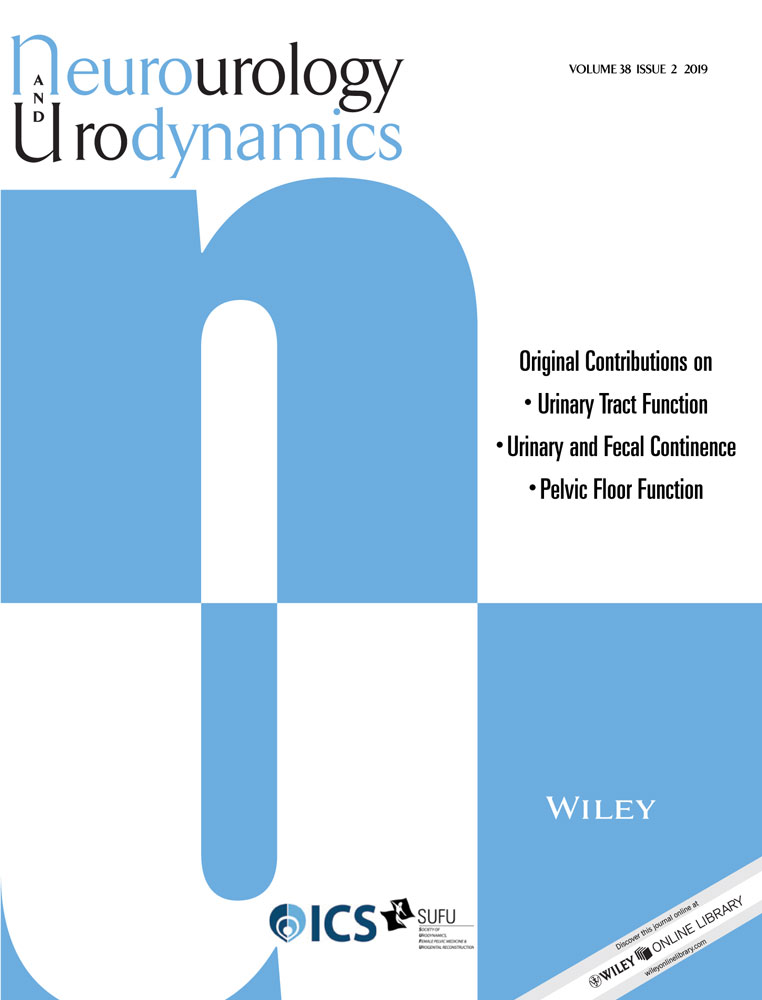A study of prostate volumes in patients with spinal cord injury
Abstract
Aims
To evaluate the development of benign prostatic hyperplasia (BPH) in patients with spinal cord injury (SCI) and to deduce the role of the nervous system in this process.
Methods
Prostate volumes (PVs) of 65 men older than 30 years of age who sustained SCI were determined from CT scans. Correlations of PVs with SCI level, age, age during SCI and duration of paralysis were calculated.
Results
Average patient's age during SCI was 37.7 (±19) years and during measurement of PV 54.8 (±15.3) years. PVs of patients with SCI were similar to expected age-adjusted volumes (29.7 ± 24 mL vs 29.9 ± 5.7 mL, P = 0.95). We dichotomized the cohort into two groups: High SCI (T5 and above) and low SCI (T6 and below) with almost identical: number of patients, age of SCI and duration of paralysis. Patients with lower injuries, had significantly smaller PVs when compared both to patients with higher injuries (19.4 ± 6.3 and 39.8 ± 30, P = 0.0006) and to age-adjusted normal PVs (19.4 ± 6.3 and 29.2 ± 5.8, P = 0.0005). Correlation of PV with age was found in patients higher injuries (R2 = 0.26, p = 0.003) but not in patients with lower (R2 = 0.08, P = 0.11). Moreover, patients with lower SCI had significantly smaller prostate even compared to expected PVs during SCI (18.7 ± 4.6 cc vs 27.8 ± 6.9 cc, P = 0.00006).
Conclusions
Low SCI stops and reverses age related increase in PV. This phenomenon does not occur in high SCIs. This suggests that continuous support of the nervous system is essential for sustaining BPH and raises the possibility of finding a non-hormonal pharmacological intervention for reversing BPH.




